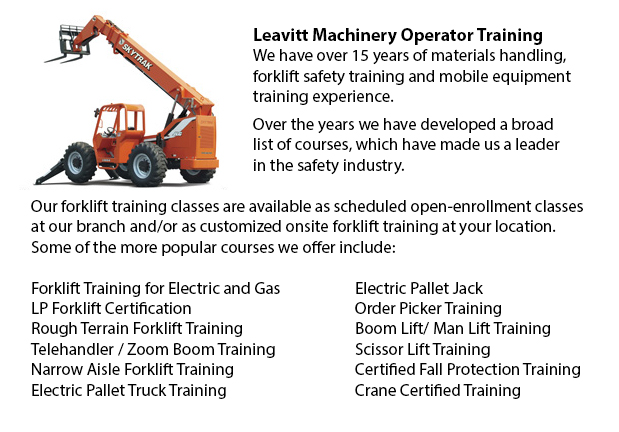
Telehandler License Vancouver - The telehandler or telescopic handler is a normally utilized machine in agricultural and industrial applications. This equipment is similar in appearance to a forklift and likewise works in a similar way, although telehandlers are much more like a crane than forklift. It has a telescopic boom which could extend forward and upward from the vehicle. The boom has the capability to fit one of several accessories like for instance a lift table, muck grab, pallet forks or a bucket.
The most common telehandler attachments are pallet forks. The telehandler is used so as to move items in situations where the loads cannot be moved by a traditional lift truck. Telehandlers are specially useful for placing loads on rooftops for instance, or for removing palletized cargo from with a trailer. Many of the tasks that a telehandler could complete would otherwise require a crane and this particular piece of equipment could be costly, not always time efficient and not practical.
The boom acts as a lever, raising and extending while bearing a load. Though there are rear counterweights, this may cause the telehandler to become more unbalanced. Thus, the greatest advantage of the telehandler is also its greatest limitation. As the working radius increases, the lifting capacity decreases. The working radius is defined as the distance between the center of the load and the front of the wheels.
The telehandler with a 5000 lb capacity for example, with a retractable boom can safely lift as little as 400 lb at a completely extended boom at a low boom angle. Equivalent machinery with a lift capacity of 5000 lbs and a retractable boom which can support as much as 10,000 lb with the boom raises to about 70 degrees. The operator has a load chart in order to help determine whether a certain lifting job can be done in a safe and efficient way. This particular chart takes into account the height, the boom angle and the weight.
So as to monitor the telehandler, they come outfitted together with a computer which uses sensors. These sensors work to warn the operator, with some being able to cut controls to certain inputs if the limits of the motor vehicle are exceeded. Some telehandler models are likewise outfitted together with front outriggers which are called mobile cranes. These really extend the lifting capability of the machinery while it is stationary.
-
Telehandler Ticket Vancouver
Telehandler Ticket Vancouver - The telescopic handler or telehandler is a frequently used equipment in agricultural and industrial applications. This equipment is similar in appearance to a forklift and also functions in a similar way, even if teleha... More -
Forklift Operator Certification Vancouver
Forklift Operator Certification Vancouver - Forklift operator certification is usually needed for employees working within industrial, warehouse or construction environments to guarantee the safe operation of forklifts. Workplace training need to fol... More -
Certified Fall Protection Training in Vancouver
There are high numbers of injuries at work linked to falling and a lot of fall-related deaths reported each and every year. The majority of these instances might have been avoided with better training, better measures in place, and by correctly equip... More -
Forklift Training Course Vancouver
Forklift Training Course Vancouver - CSA and OSHA establish criteria for forklift safety training which meets existing standards and regulations. Anyone planning to utilize a forklift is needed to successfully complete safety training prior to using... More -
Overhead Crane Certification Vancouver
Overhead Crane Certification Vancouver - The overhead crane certification course is a program that is designed to assist trainees, even if they have literacy or language restrictions. The course comprises a practical hands-on training session and a c... More -
Forklift Instructor Training Vancouver
Forklift Instructor Training Vancouver - Forklift Instructor training certification is recommended for forklift operators who would like to become instructors. To qualify for forklift instructor training, operators must be able to prove they possess... More -
Crane / Overhead Crane / Truck Mounted Crane / Hydraulic Cranes Training in Vancouver
Overhead cranes are likewise referred to as bridge cranes. They are actually a type of crane which comprises a hook and line apparatus which runs along a horizontal beam which runs along two widely separated rails. Lots of overhead cranes can be foun... More -
Scissor Lift Safety Training Vancouver
Scissor Lift Safety Training Vancouver - A scissor lift is a kind of platform lift that moves vertically. The lift table is moved in a vertical motion because of criss-cross folding supports which are linked in what is referred to as a pantograph. Th... More

Forklift Training Vancouver
TOLL FREE: 1-888-254-6157
24389 Fraser Highway
Langley, British Columbia
forklifttrainingvancouver.com
Email Us
About Us


